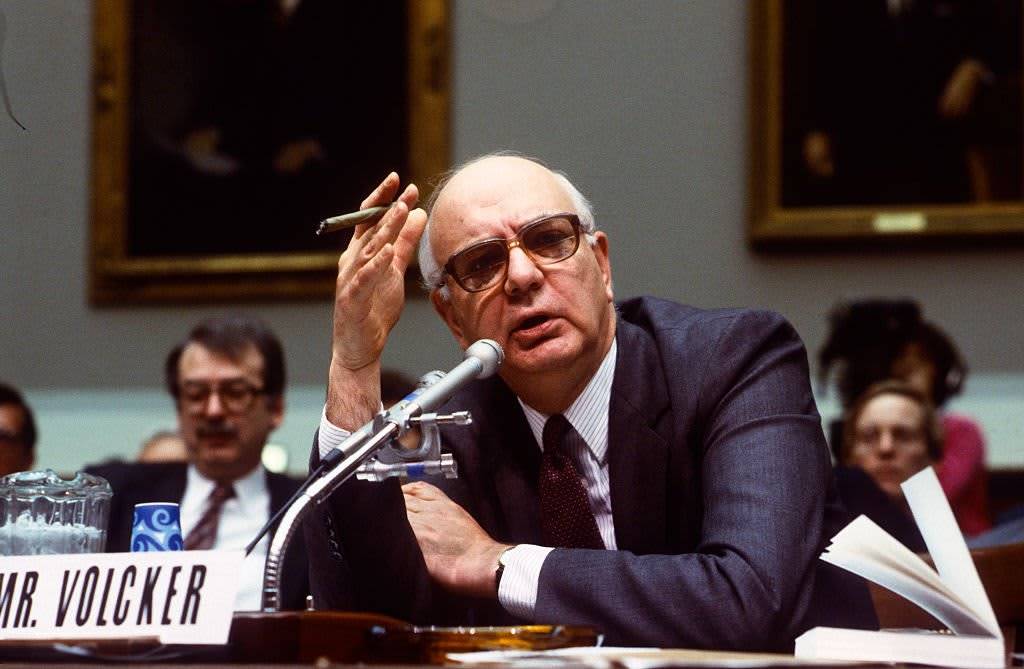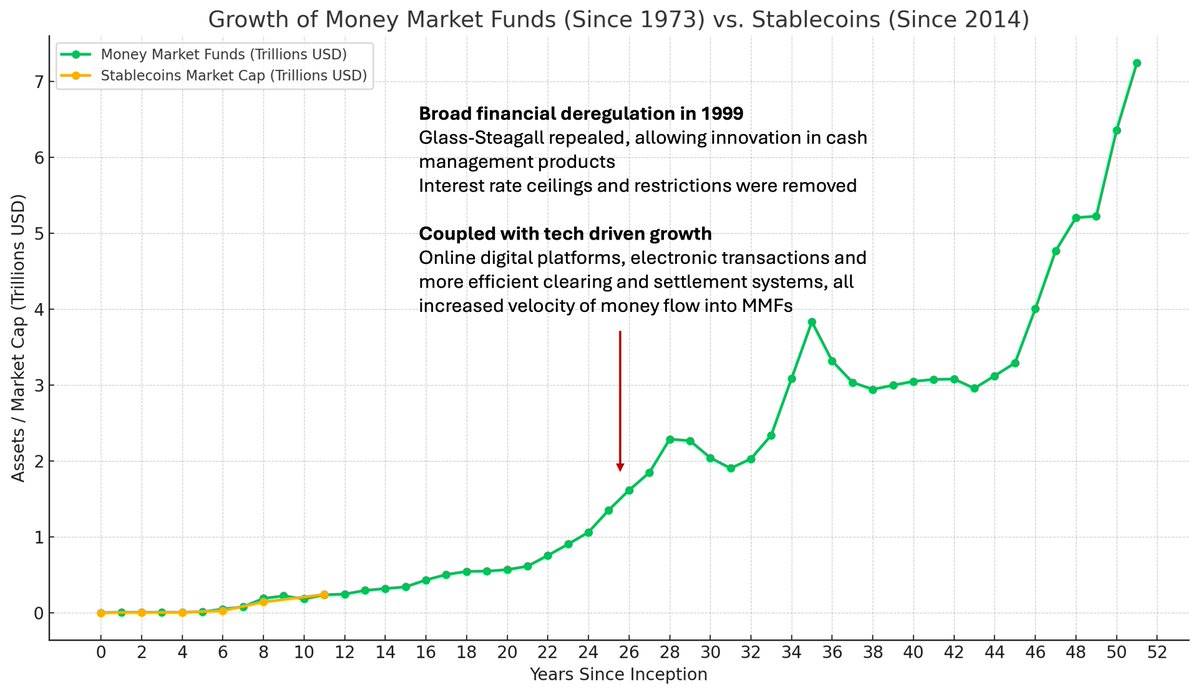The upcoming stablecoin legislation in the United States is seen as an opportunity to drive an upgrade of the financial system, similar to the development of money market funds (MMFs) half a century ago.
Author: Shawn, Artichoke Capital
Translation: Deep Tide TechFlow
Stablecoins are exciting!
The forthcoming U.S. stablecoin legislation represents a once-in-a-lifetime opportunity to promote a comprehensive upgrade of the financial system. For those studying financial history, this process bears many similarities to the invention and development of money market funds (MMFs) half a century ago.
Money market funds emerged in the 1970s as a cash management solution primarily for businesses.
At that time, U.S. banks were prohibited from paying interest on balances in checking accounts, and businesses typically could not open savings accounts.
If a business wanted to earn interest on idle funds, it had to purchase U.S. Treasury Bills, enter into Repo Agreements, invest in Commercial Paper, or buy Negotiable Certificates of Deposit. This cash management approach was cumbersome and time-consuming, causing significant inconvenience for businesses.
The design of money market funds was intended to maintain a fixed value for each fund share, with each share pegged to $1.
In 1971, Reserve Fund, Inc. launched the first money market fund as a "convenient alternative" for directly investing temporary cash balances in money market instruments such as Treasury bills, commercial paper, banker's acceptances, or certificates of deposit. At that time, the fund's assets totaled only $1 million.[1]
Subsequently, other investment giants quickly followed suit, such as Dreyfus (now @BNYglobal), @Fidelity, and @Vanguard_Group. Notably, Vanguard attributed nearly half of its legendary mutual fund business growth in the 1980s to its money market funds (credit to @awealthofcs).

Paul Volcker, during his tenure as Chairman of the Federal Reserve (1979-1987), held a highly critical view of money market funds (MMFs). Even as late as 2011, he continued to criticize money market funds.
Interestingly, many of the criticisms raised today by policymakers opposing stablecoins echo the accusations made against money market funds half a century ago:
- Systemic risk and threats to banking stability
Money market funds do not enjoy deposit insurance and lender of last resort support like insured deposit institutions (such as banks). Therefore, money market funds are susceptible to rapid runs, which can exacerbate financial instability and trigger a chain reaction. Additionally, there are concerns that the transfer of deposits from insured banks to money market funds could weaken the banking sector, as banks lose a low-cost and stable deposit base.
- Unfair regulatory arbitrage
Money market funds provide services similar to banks by maintaining a stable $1 share value but are not subject to stringent regulatory scrutiny or capital requirements. This realization of "bank-like functions" is seen as a regulatory loophole.
- Undermining the transmission mechanism of monetary policy
As funds flow from banks to money market funds, traditional monetary policy tools of the Federal Reserve (such as reserve requirements imposed on banks) become less effective, potentially undermining the execution of monetary policy.
Today, money market funds hold over $7.2 trillion in financial assets. In contrast, the M2 money supply in the U.S. (which roughly excludes money market fund assets) is $21.7 trillion.
The rapid growth of assets under management (AUM) in money market funds in the late 1990s was driven by financial liberalization (the repeal of the Glass-Steagall Act and the passage of the Gramm-Leach-Bliley Act, which spurred a wave of financial innovation).
At the same time, advancements in electronic and online trading systems brought about by the internet boom also accelerated the inflow of funds into money market funds.

Noticing a pattern?
(Note that the regulatory battles surrounding money market funds have not ended even after half a century. The U.S. Securities and Exchange Commission (SEC) passed new money market fund reform measures in 2023, which include higher minimum liquidity requirements and the removal of restrictions on fund managers' ability to limit investor redemptions.)
[1] Unfortunately, Reserve Fund came to an end after the 2008 financial crisis. Some of the debt securities held by the fund from Lehman Brothers were written down to zero, leading to a breaking of the fund's peg and triggering a wave of redemptions.
免责声明:本文章仅代表作者个人观点,不代表本平台的立场和观点。本文章仅供信息分享,不构成对任何人的任何投资建议。用户与作者之间的任何争议,与本平台无关。如网页中刊载的文章或图片涉及侵权,请提供相关的权利证明和身份证明发送邮件到support@aicoin.com,本平台相关工作人员将会进行核查。




